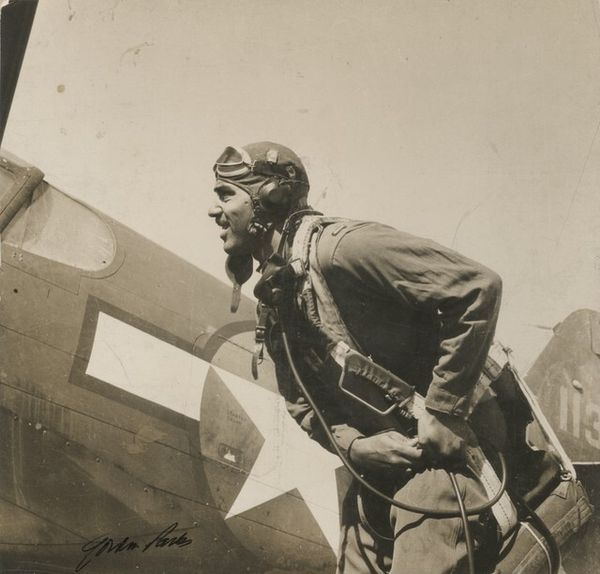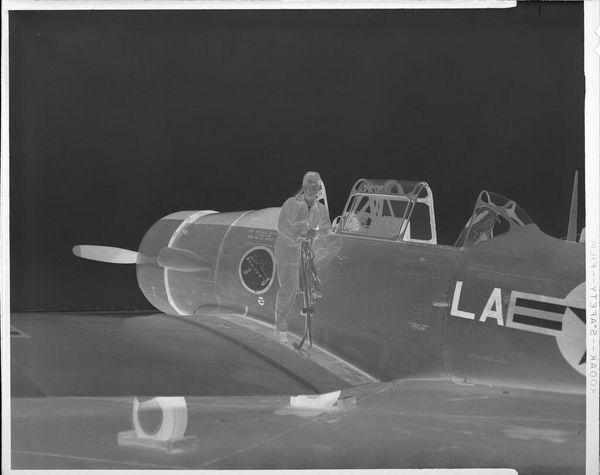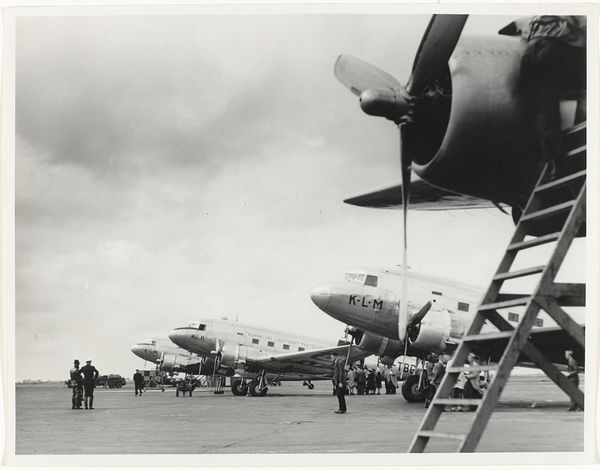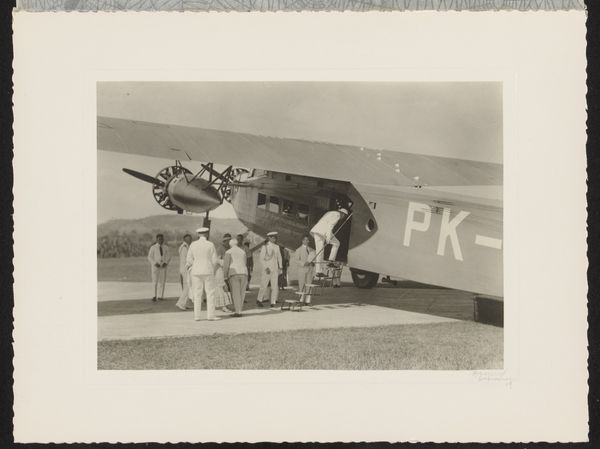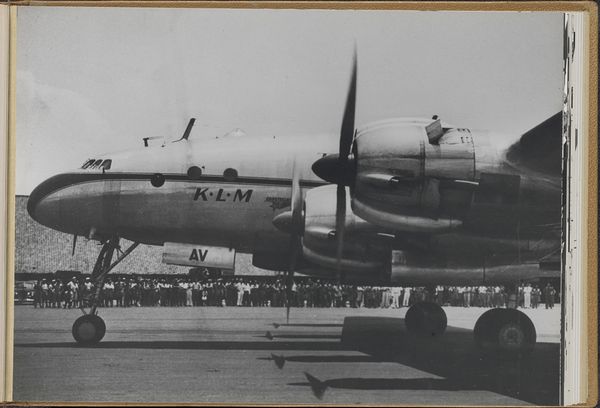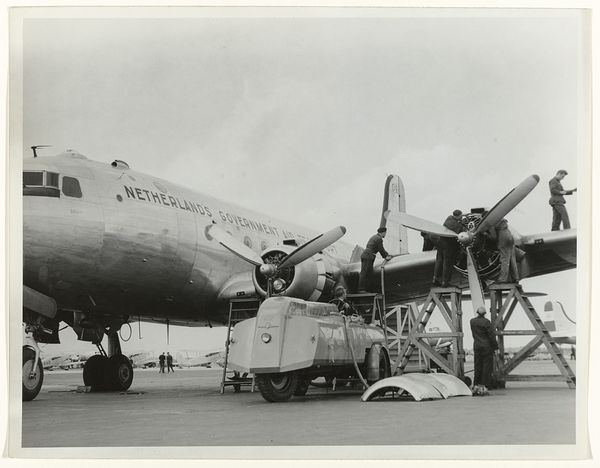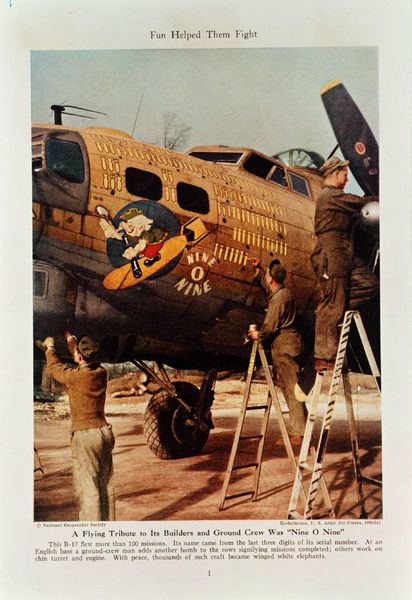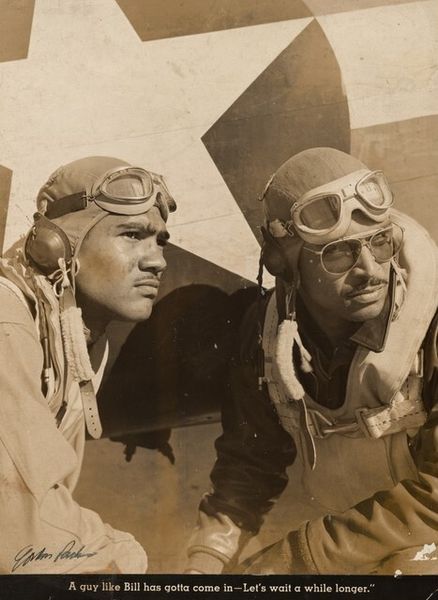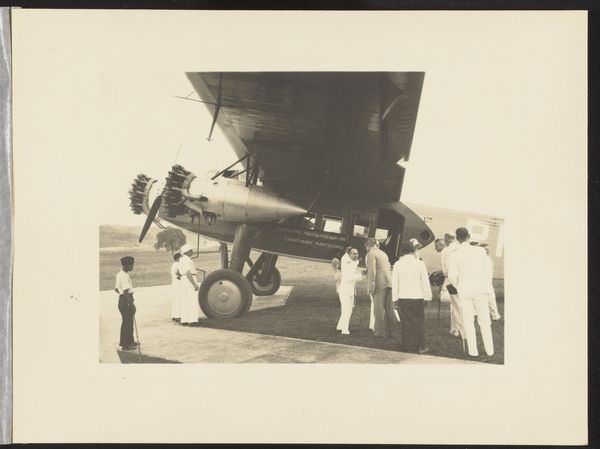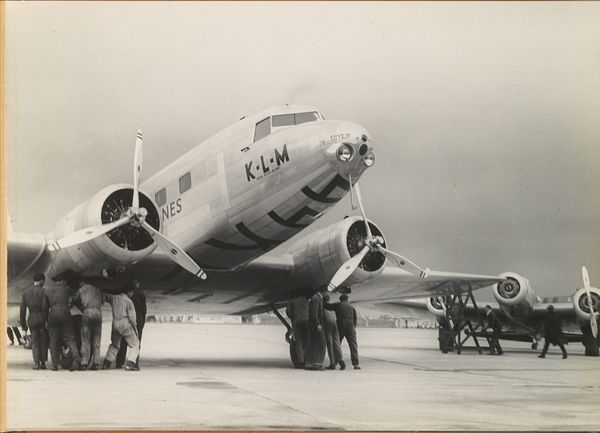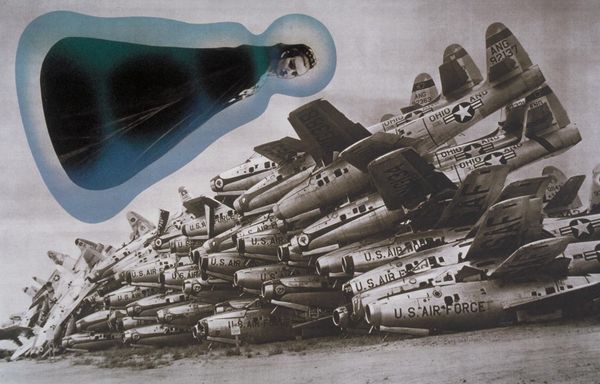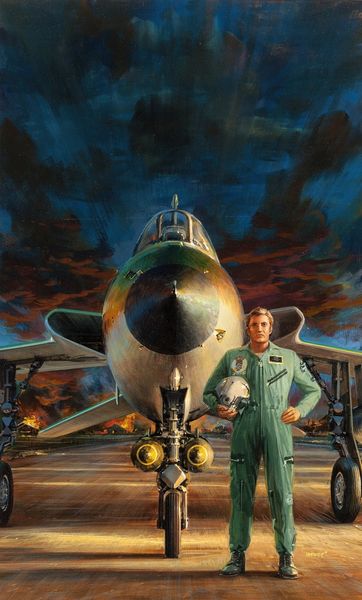
P40 in Line for Take Off, Selfridge Field, Michigan ("We're back sugar—Thanks a lot—You're a great gal.") 1943
0:00
0:00
#
automotive concept
#
aged
#
vehicle photography
#
charcoal drawing
#
car photography
#
automotive design photography
#
automotive photography
#
vehicle
#
graphite
#
rough masculine
Dimensions: image/sheet/mount: 35.1 × 25.9 cm (13 13/16 × 10 3/16 in.)
Copyright: National Gallery of Art: CC0 1.0
Editor: This is Gordon Parks' photograph, "P40 in Line for Take Off, Selfridge Field, Michigan," taken in 1943. The almost sepia tone gives it such a sense of age and solemnity. There's an airman standing on the left looking at the pilot in the cockpit of his plane. It also has this striking quote scrawled across the bottom: "We're back sugar—Thanks a lot—You're a great gal." It's like this casual bravado in the face of something so serious. What do you see in this piece, from a historical perspective? Curator: Well, I think that tension is exactly right. Parks, through his lens, presents us with a critical perspective on the theater of war. This image was part of a series commissioned by the Office of War Information, initially meant to champion American wartime efforts. But Parks, as a Black photographer, inevitably captured a far more complex narrative. Editor: How so? Curator: Consider the context. While Black Americans were being asked to fight for democracy abroad, they were simultaneously denied it at home. This photo subtly hints at that dichotomy. The celebratory phrase is juxtaposed with the reality of racial segregation in the military and the ongoing struggle for civil rights. Even this airplane, ready to be launched into war, sits waiting for its chance at perceived liberty, paralleling a whole sector of people ready to fight but who don’t actually know if liberty exists for them. It makes you wonder if Parks intentionally chose a composition that hinted at the hypocrisy of it all. Editor: I never thought of it that way, seeing it as government propaganda at first glance. Curator: It speaks to the power of photography, doesn't it? It can be both a tool for propaganda and a vehicle for truth, sometimes simultaneously. It is up to us as critical viewers to dig deeper. Editor: It’s powerful to think of Parks subverting the original intention of the commission, just by framing the image in a specific way. Curator: Precisely. Parks used the commission as an opportunity to inject a social commentary on the role of Black Americans, making the personal and political indivisible. The picture makes one consider not only the pilots but also the culture supporting them. Editor: Thank you. I'm looking at this image with entirely new eyes now.
Comments
No comments
Be the first to comment and join the conversation on the ultimate creative platform.
